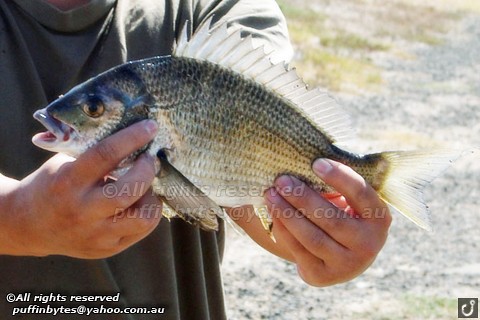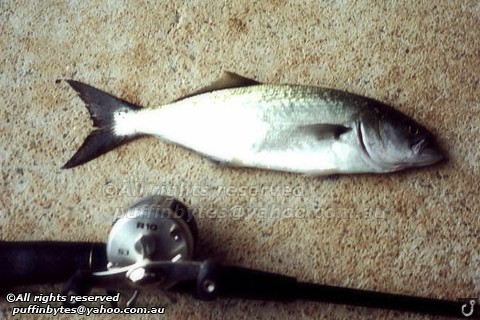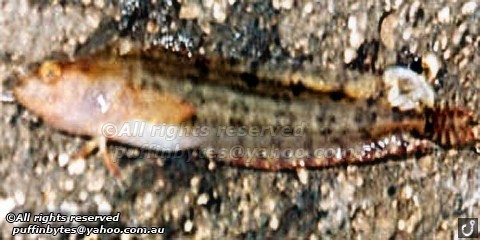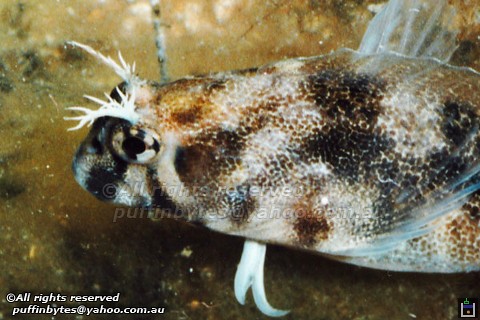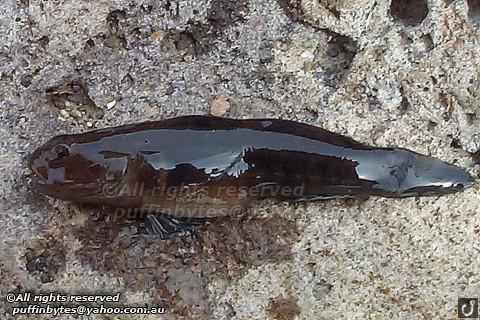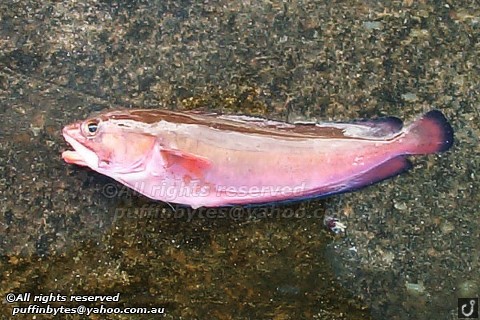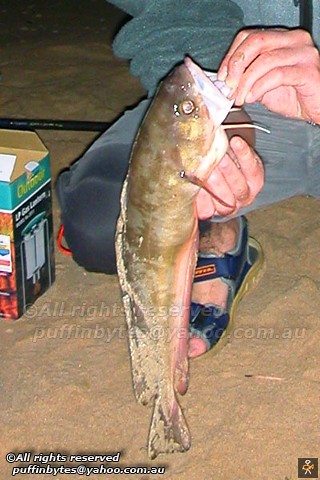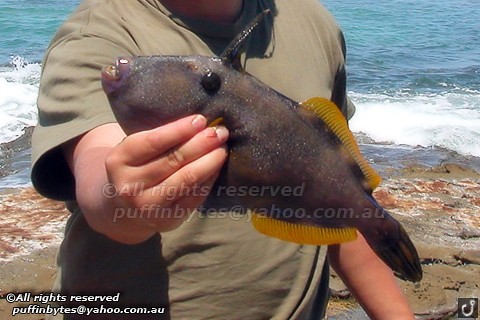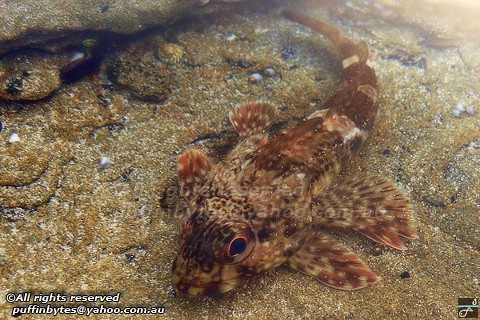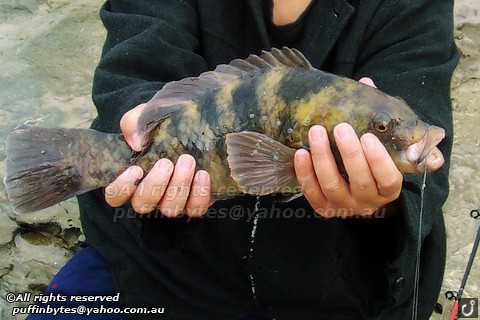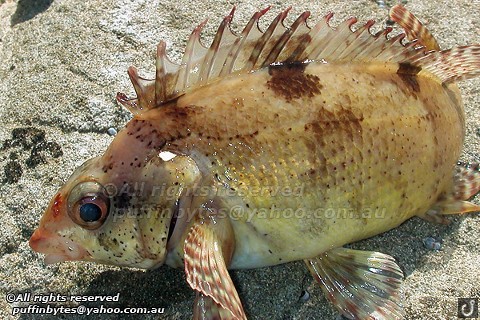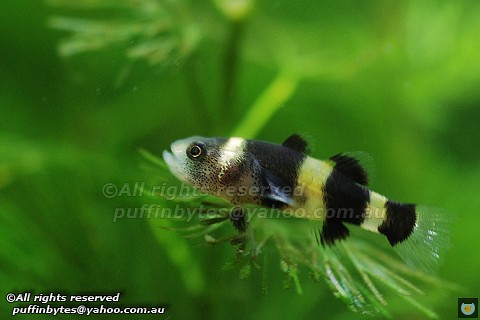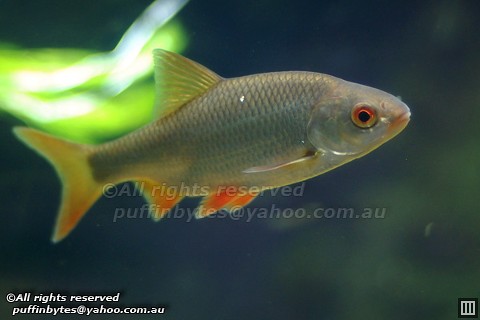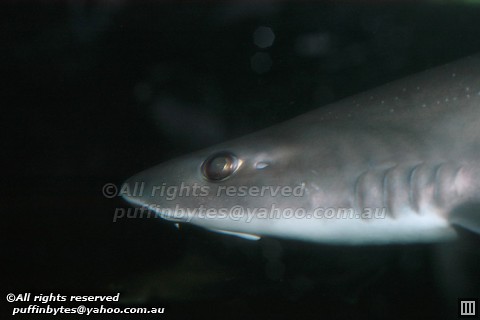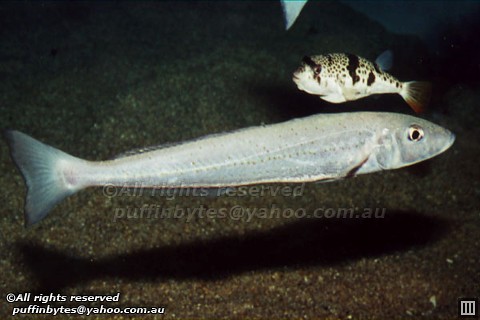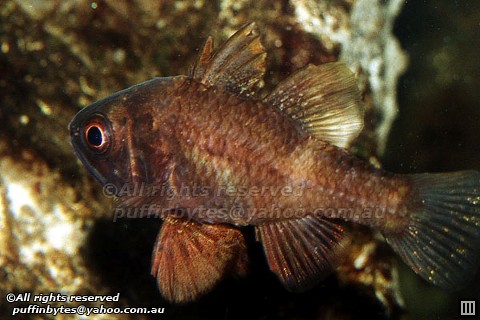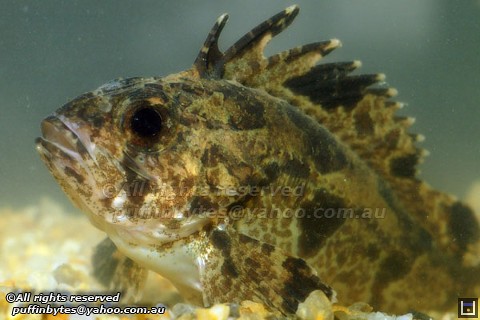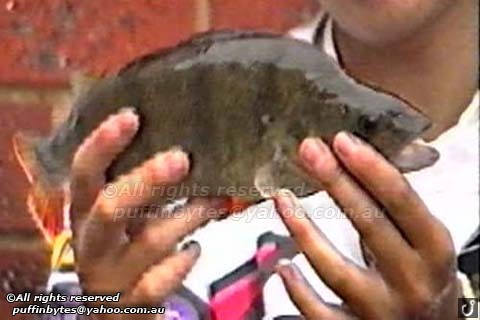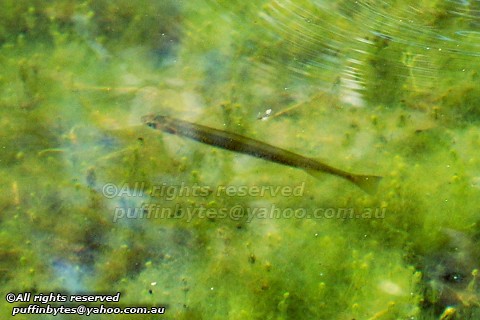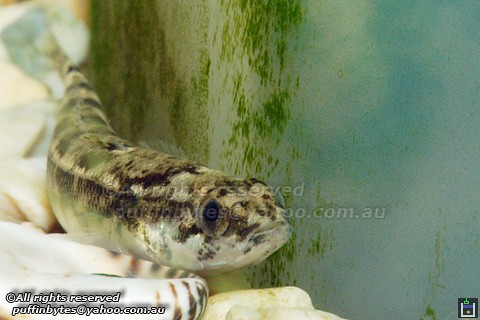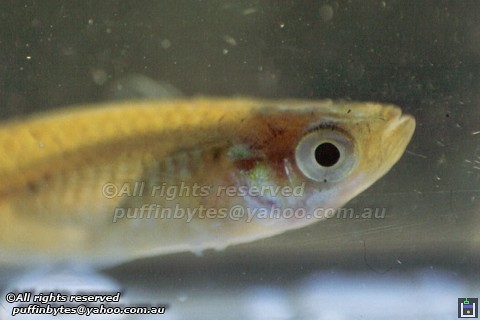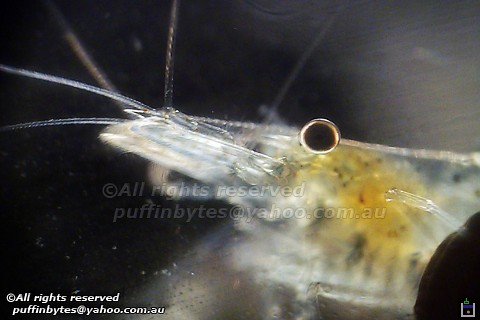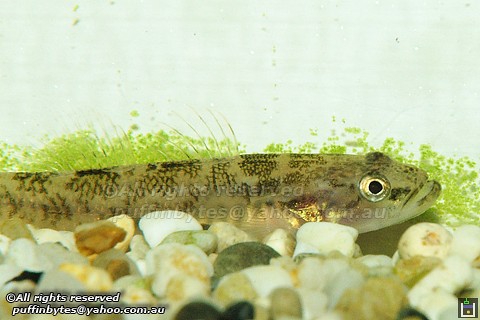15th July 2000, Montague Island
I did a long road trip from Melbourne, Lakes Enterance, Canberra, Southern Highlands, Sydney then back down to Narooma, Lakes Enterance again and then back home to Melbourne. We didn't make to fish but found a fishing/seal watching trip which took us to Montague Island when we were in Narooma. This was my first and only charterboat trip in Australia. On the Island, we saw New Zeland Fur Seals. Fishing produced Eastern Red Scorpionfish [#37], Maori Wrasse [#38], Blue Morwong [#39], many Mado [#40] and my one and only ever Crimson Banded Wrasse [#41] (a male as well), These were all beautifully coloured fish and all new species.
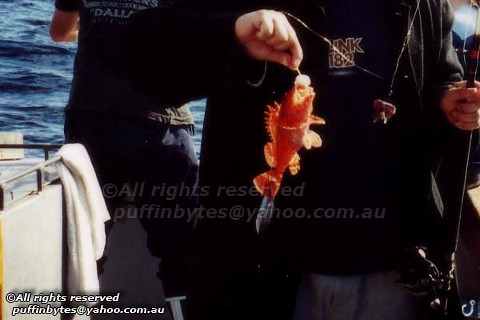
Eastern Red Scorpionfish - Scorpaena cardinalis #37
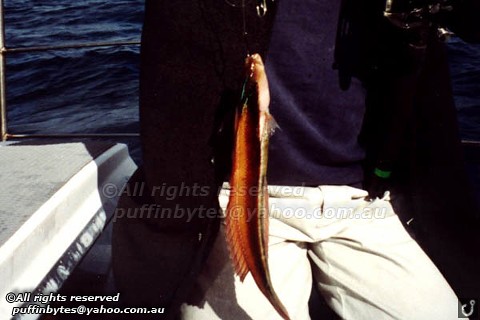
Maori Wrasse - Ophthalmolepis lineolata #38
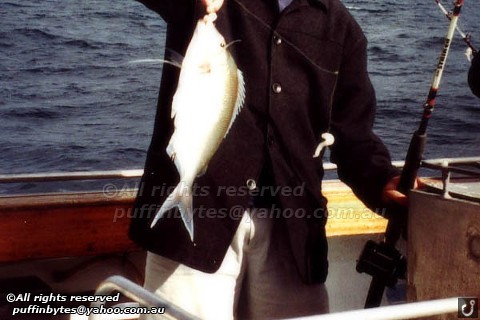
Blue Morwong - Nemadactylus douglasii #39
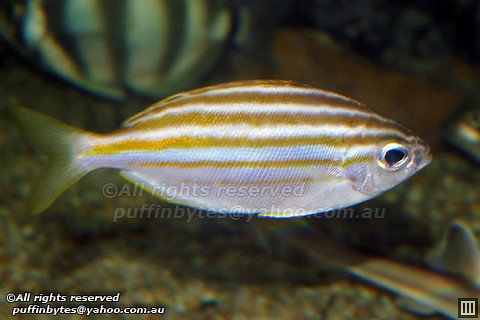
Mado - Atypichthys strigatus #40
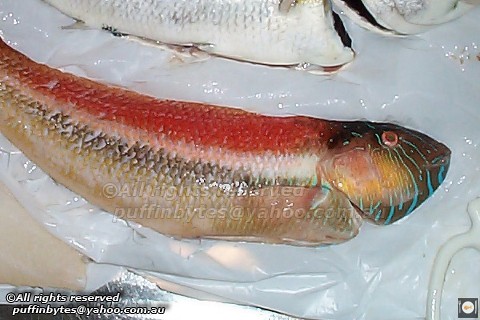
Maori Wrasse - Ophthalmolepis lineolata
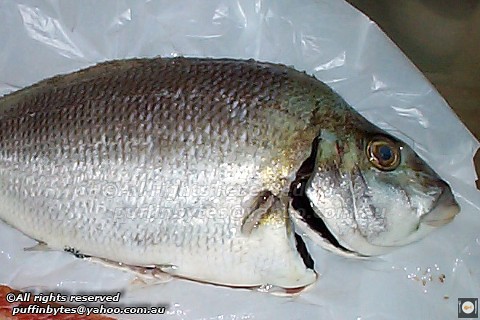
Blue Morwong - Nemadactylus douglasii
15th April 2003, Port Stephens
This was mainly a sightseeing trip but managed a few hours of Rock and Beach fishing. The only fish I've got recorded for this trip was my first Blue or Slimy Mackerel [#43]. My father also caught a female Crimson-baneded Wrasse.
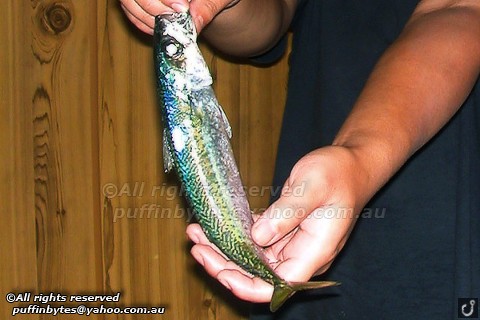
Blue Mackerel - Scomber australasicus #43
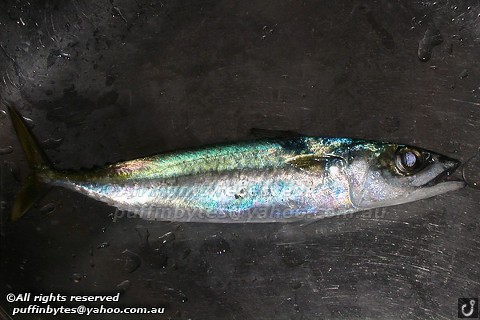
Blue Mackerel - Scomber australasicus
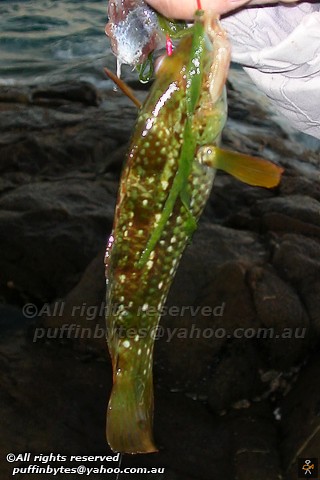
Female Crimson-banded Wrasse - Notolabrus gymnogenis
1st-3rd February 2004, Tathra
This was a 2 night fishing trip fishing several locations around the Tathra area. Fishing the surf beaches, I caught my first Sand Mullet [#44] as well as the usually Australian Salmon. In the nearby estuary I caught a Silver Biddy [#45]and a Tarwhine [#46], both new species as well. The following day, more Mullet and Salmon and at night, I had a bumper catch of a few dozen yellowtail scad [#47], several nice tailor and a single mackerel.
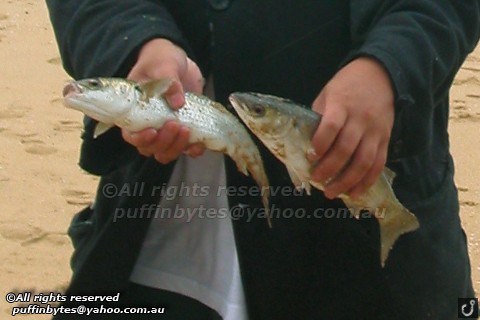
Sand Mullet - Myxus elongatus #44
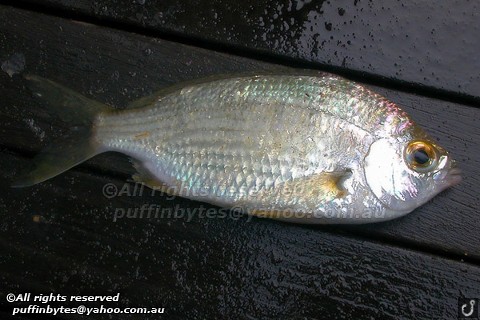
Common Silver Belly - Gerres subfasciatus #45
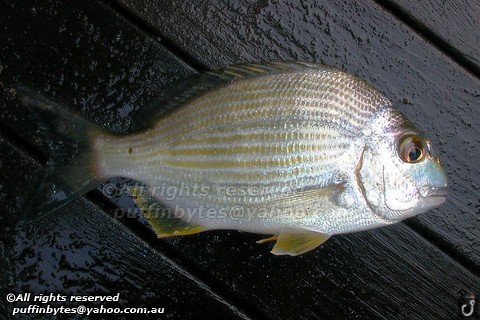
Tarwhine - Rhabdosargus sarba #46
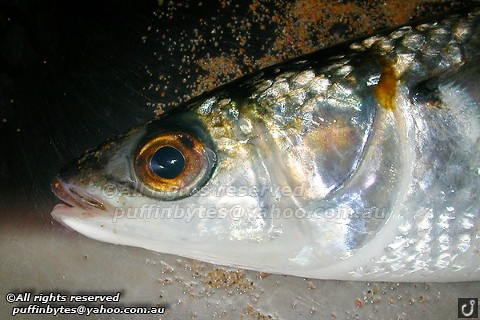
Sand Mullet - Myxus elongatus

Yellowtail Horse Mackerel - Trachurus novaezelandiae #47
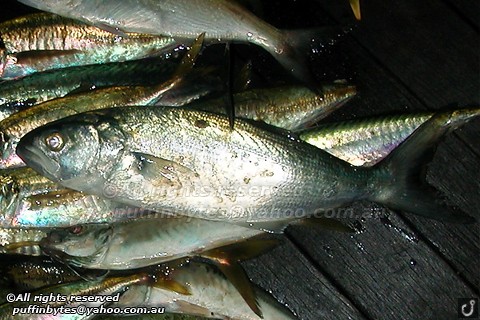
Tailor - Pomatomus saltatrix

Blue Mackerel - Scomber australasicus
